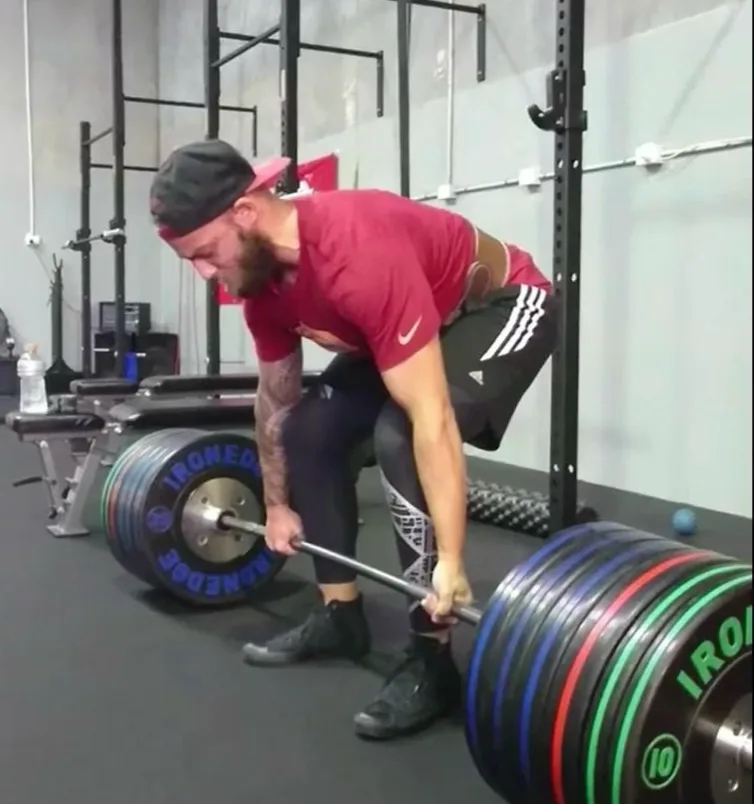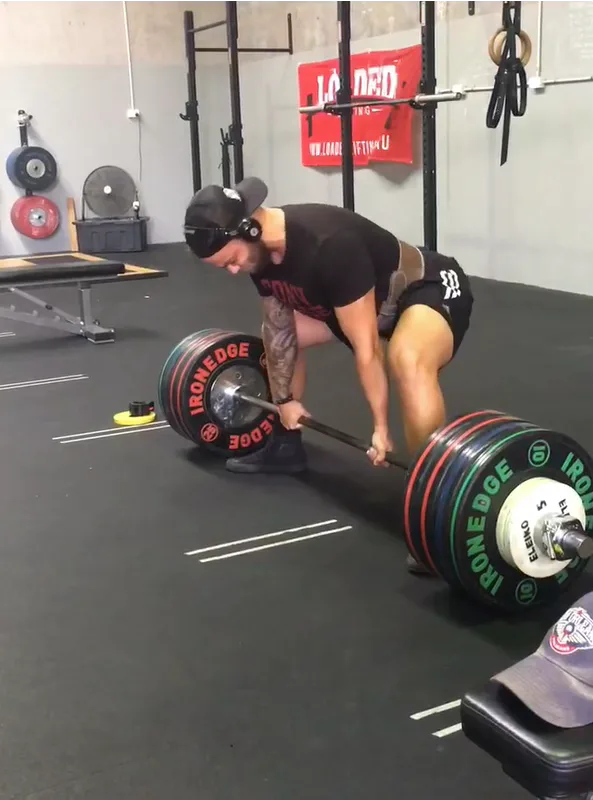If you’re looking to build a stronger, more powerful lower body, deadlifting is one of the best exercises you can do. Not only does this compound movement work multiple muscle groups at once, but it also promotes overall balance and stability, making it a valuable addition to virtually any strength training routine. Whether you’re just getting started with weightlifting or you’re a seasoned gym-goer, this blog will briefly touch on some key differences and benefits between the conventional and sumo deadlift, along with some variations you may have not seen before, including the trap bar and rack pull. Deadlifts have been shown to be safe and beneficial when recovering from lower back pain and associated with decreased fear.
Conventional Deadlifts
Conventional deadlifts are great for building overall strength and power. They target the posterior chain muscles, including the hamstrings, glutes, and lower back more effectively than any other exercise. The weight is lifted by extending the hips and knees. When we look in the world of powerlifting, generally lifters who have longer legs and a shorter torso tend to gravitate to the conventional deadlift.
Benefits Of The Conventional Deadlift
Builds total body strength: Due to the full-body nature of the lift, conventional deadlifts build overall strength in the lower back, glutes, hamstrings, and quads.
Increases muscle mass: Conventional deadlifts stimulate muscle growth in multiple muscle groups, making them one of the best exercises for adding muscle mass.
Improvements in bone mineral density
Sumo Deadlifts
Sumo deadlifts are another variation of the deadlift. They are performed by taking a wide stance with toes pointing outward and hands placed inside the knees. The grip can be either overhand or mixed. In this variation, the lifter brings their hips closer to the bar, and the knees are pushed out to the sides. This stance allows the lifter to maintain an upright torso throughout the lift, which puts less stress on the lower back. The weight is lifted by the spreading of the knees and hips. Sumo deadlifts generate more power from the quadriceps, while conventional deadlifts put more emphasis on the posterior chain, including the hamstrings and glutes. Lifters who have shorter legs, but longer torso tend to gravitate to this style of deadlift.
Benefits Of Sumo Deadlifts
Reduces stress on the lower back: The wide stance of the lift keeps the torso more upright, which reduces stress on the lower back.
Targets the quads and glutes: The wider stance in sumo deadlifts puts more emphasis on the quads and glutes than conventional deadlifts.
Improves flexibility: The wide stance in sumo deadlifts can improve hip and groin flexibility, which can translate into better performance in other exercises and activities.
Other Deadlifts
Before we wrap up, let’s look at some other common deadlift variations you may come across during your time in the gym or may wish to try out for yourself. The trap bar deadlift and rack pull.
Trap bar/ hex bar
Reduced stress on the lower back: The trap bar deadlift allows a more upright torso position, which places less stress on the lower back compared to the conventional barbell deadlift.
Increased quad activation: The trap bar deadlift requires more knee extension and involves more quadriceps activation than the conventional barbell deadlift.
Improved grip strength: The design of the trap bar allows for a more neutral grip, which can be easier for some people to hold onto and can improve grip strength.
Better overall muscle activation: The trap bar deadlift targets more muscle groups, including the glutes, hamstrings, quads, traps, and upper back, making it a more comprehensive exercise.
Safer for beginners: The trap bar deadlift is a safer variation for beginners due to the more natural and balanced positioning of the body.
Rack pulls
Targeted muscle activation: Rack pulls primarily target the posterior chain muscles such as hamstrings, glutes, and lower back muscles. These muscles are essential for improving overall strength and power.
Increased deadlift strength: Rack pulls can help improve your deadlift strength by allowing you to lift heavier weight than traditional deadlifts. This is because
the bar is lifted from a higher position, reducing the range of motion and placing less stress on your lower back.
Improved grip strength: Rack pulls place a greater demand on your grip strength due to the heavier weights lifted. This can help improve grip strength and forearm endurance, which will carry over to other exercises like the deadlift.
Versatility: Rack pulls can be performed using different variations, such as the sumo-style, conventional style, and trap bar variation. This allows for greater variety in training and helps target specific muscle groups.
Conclusion
What does this mean for you, should you pick one over the other? Just like the Old El Paso television ad, why not have both? Next time you are in the gym try both and see which one you feel better/ stronger at performing. Alternatively, you can do variations. For example, a sumo deadlift from the floor and perform a rack pull with a conventional technique.
In summary both conventional and sumo deadlifts are excellent exercises for building strength, muscle mass and bone density. They target different areas of the body, so it’s important to determine your goals before choosing the right variation for your workout routine. Conventional deadlifts are perfect for building total body strength, while sumo deadlifts are great for targeting the quads and glutes while reducing stress on the lower back. Incorporating both variations into your workout routine can help you achieve a well-rounded physique and improve overall strength and muscle mass.
Article written by Josh James
References
- . Gibbs MT, Morrison NM, Raftry S, Jones MD, Marshall PW. Does a powerlifting inspired exercise programme better compliment pain education compared to bodyweight exercise for people with chronic low back pain? A multicentre, single-blind, randomised controlled trial. Clinical Rehabilitation. 2022;36(9):1199-1213. doi:10.1177/02692155221095484
- Hales, M. (2010). Improving the deadlift: Understanding biomechanical constraints and physiological adaptations to resistance exercise. Strength & Conditioning Journal, 32(4), 44-51. DOI: 10.1519/SSC.0b013e3181e5e300
- Watson, S. L., Weeks, B. K., Weis, L. J., Harding, A. T., Horan, S. A., & Beck, B. R. (2018). High-Intensity Resistance and Impact Training Improves Bone Mineral Density and Physical Function in Postmenopausal Women With Osteopenia and Osteoporosis: The LIFTMOR Randomized Controlled Trial. Journal of bone and mineral research : the official journal of the American Society for Bone and Mineral Research, 33(2), 211–220. https://doi.org/10.1002/jbmr.3284
- Vecchio, L., Daewoud H, Green S. The health and performance benefits of the squat, deadlift, and bench press. MOJ Yoga Physical Ther. 2018;3(2):40‒47. DOI: 10.15406/mojypt.2018.03.00042



